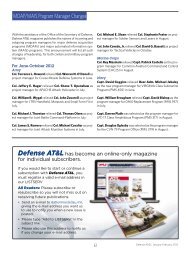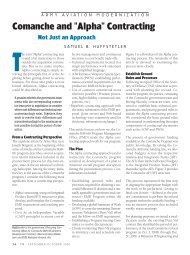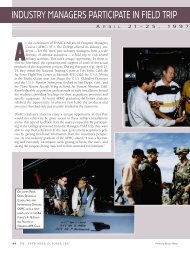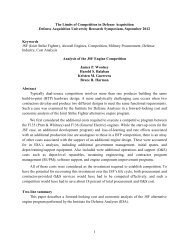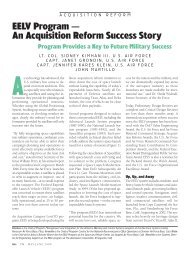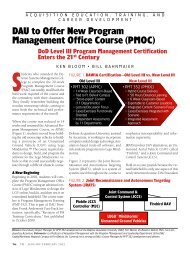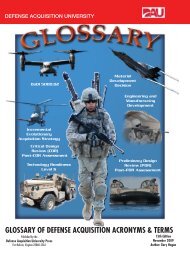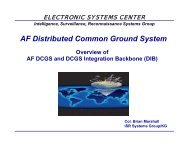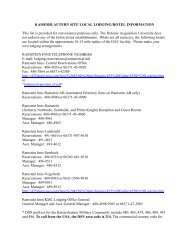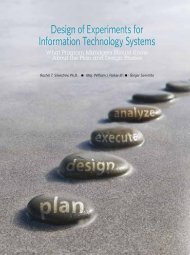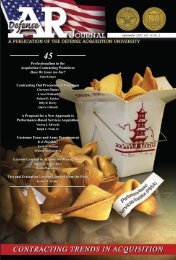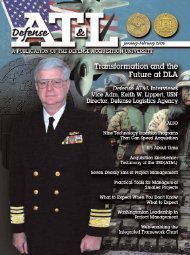Defense ARJ - Defense Acquisition University
Defense ARJ - Defense Acquisition University
Defense ARJ - Defense Acquisition University
You also want an ePaper? Increase the reach of your titles
YUMPU automatically turns print PDFs into web optimized ePapers that Google loves.
<strong>Defense</strong> <strong>Acquisition</strong> Review Journal<br />
beliefs and assumptions with more rational and constructive ones (Burns, 1980; Ellis,<br />
1977; Neck & Manz, 1992). Similarly, self-talk, defined as what we covertly tell<br />
ourselves, can be closely examined in order to eliminate undue negativity and pessimism.<br />
Research in various fields (sports psychology, clinical psychology, education,<br />
and communication) supports the use of positive self-talk as an effective way to<br />
improve individual performance (e.g., Neck & Manz, 1992). Mental imagery involves<br />
symbolically experiencing behavioral outcomes prior to actual performance without<br />
overt physical muscular movement (Driskell, Copper, & Moran, 1994; Finke, 1989;<br />
Neck & Manz, 1992, 1996). Research suggests that people who visualize successful<br />
performance before actually engaging in performance are much more likely to<br />
perform successfully when faced with the actual task (Neck & Houghton, 2006). In a<br />
meta-analysis of 35 empirical studies, Driskell et al. (1994) reported an overall positive<br />
and significant effect for mental imagery on individual performance.<br />
Theorists have often suggested a relationship between self-leadership and creativity<br />
(e.g., DiLiello & Houghton, 2006; Houghton & Yoho, 2005; Manz & Sims, 2001).<br />
The relationship between creativity and self-leadership may be partially founded on<br />
the concepts of autonomy and self-determination. Autonomy, a key aspect of creativity<br />
(e.g., Amabile, 1996; Barron & Harrington, 1981; Woodman et al., 1993), has<br />
been linked to self-determination and intrinsic motivation (Deci & Ryan, 1985). Selfdetermination<br />
is a primary component of self-leadership’s natural reward strategies<br />
(Neck & Manz, 2007). Indeed, empirical research suggests that an individual’s need<br />
for autonomy can subsequently influence the extent to which the individual engages<br />
in self-leadership (Yun, Cox, & Sims, 2006).<br />
Other relationships between creativity and self-leadership have also been suggested.<br />
For example, Houghton and Yoho (2005) have suggested a relationship between<br />
individual self-leadership and subsequent levels of individual independence and<br />
creativity. In addition, internal locus of control, a theorized component of creativity,<br />
has been empirically related to individual self-leadership (Kazan & Earnest, 2000).<br />
Finally, an empowering leadership style (leading others to be self-leaders) tends to<br />
promote creativity rather than conformity (Manz & Sims, 2001). Indeed, creativity<br />
may be one of the most essential aspects of effective organizational leadership<br />
(Mumford & Connelly, 1999). Creative thinking and a different style of leadership<br />
are necessary to provide flexibility, facilitate change, and redesign traditional bureaucratic<br />
processes (Katz & Kahn, 1978). Encouraging self-leadership is a relatively<br />
100<br />
The relationship between creativity and self-leadership may<br />
be partially founded on the concepts of autonomy and<br />
self-determination.



